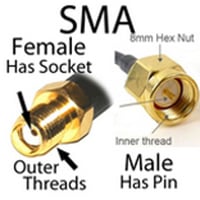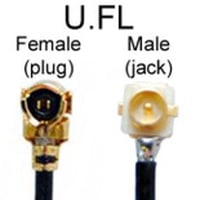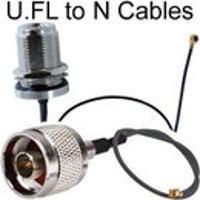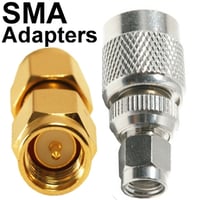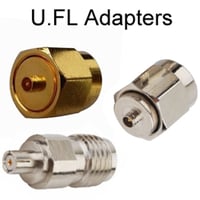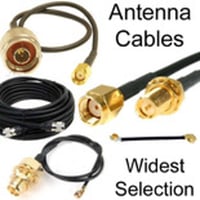Enclosure Accessories
Electronics Enclosure Accessories:
Electronic enclosure accessories are components that can be attached to a NEMA enclosure or box to enhance its performance and functionality. They will assist in Protecting equipment from corrosion and also help organize equipment within the enclosure while maintaining an optimal internal environment. Accessories may be selected for mounting the enclosure, routing coaxial and power cables, wires, and switches, or improving the ventilation of the enclosure. They are also key to making critical modifications to the enclosure that may be needed for the application when it is installed. Electronic enclosure accessories should be matched to the box and not impair the ingress protection rating of the box. An extensive range of options is available for metal and polycarbonate or ABS enclosures and enclosures with knockouts that can be customized to your requirement.
Key electronic enclosure accessories include:
- Vents
- Plugs
- Gaskets
- Internal and external mounting equipment
- Glands
- Bulkhead connectors
Quality electronic enclosure components that meet the highest standards of sourcing and fabrication
Our expansive range of electronic enclosure accessories are Restriction of Hazardous Substances (RoHS) compliant and also comply with Section 1502 of the Dodd-Frank Act and legislation on conflict minerals.
What are the options for mounting electronic enclosures?
Mounting arrangements for electronic enclosures not only have to take into account the size and weight of the enclosure but also be able to deliver accessibility to mounted equipment and withstand often harsh or exposed external conditions. Electronic enclosures are also found in increasingly diverse locations and therefore mounting options need to be flexible. The enclosures will typically come with pre-prepared holes to allow direct attachment to a flat surface or rails for pole mounting without altering the level of protection the enclosure delivers.
Key mounting options include wall mounting brackets and pole mount kits that deliver advantage by providing secure positioning of an enclosure while using space economically.
- Wall mounting enclosures
Enclosures can be directly screwed into a wall using suitable screws and wall or masonry plugs. Mounting kits, mounting brackets and DIN rails can be readily and securely attached to the enclosure and then attached to the wall surface.
- Pole Mount Kits
Select pole mounting kits that have been specifically designed for your pole-mounted enclosure. Pole mounting means that you can mount enclosures at height, and leave wall space available for other purposes. These pole mount kits are comprised of corrosion-resistant stainless-steel rails with slots that are partnered with heavy-duty U-bolts. An alternative is the use of stainless steel bands for larger diameter poles, that can be tightened to size. You will need to know the diameter of the bolt to which the enclosure will be attached.
What is a cable gland?
A cable gland is an enclosure component that is specifically designed to facilitate the passage of a power cable or coaxial cable from a device within the enclosure that it is connected to. They form a critical part of cable management and may also be relied on as a means of attachment, securing, or routing of cable as part of the setup of the electronic equipment. They are also called cable connector or cable strain relief as one of their key roles is to minimize strain, twisting, and pulling on the cable, therefore preventing damage and a deterioration in function. Cables can be sealed by passing through gland plate bulkheads which offer a watertight conduit. Depending on the design, the gland may allow some airflow for temperature and pressure equalization and to prevent the buildup of condensation within the enclosure. Cable glands can be mounted in a variety of ways depending on the arrangement required including flanged or bolted glands and threaded or nut mounting.
Protecting your cables in this way is key to preserving the continual function of your enclosure-mounted device.
Glands are also used with electronic enclosures and NEMA boxes for their weatherproofing properties, which enhance the level of protection that can be delivered by these units.
Cable glands are designed for specific types of cable and will vary with diameter and sealing. Our extensive range means that you should find it easy to select a gland for your particular application. The fabrication and ingress protection ratings available for these cable glands reflects the wide range of environments in which the glands will be used, including harsh outdoor or industrial environments that present the key challenges of temperature extremes, dust, and liquids.
Plastic cable glands come in a range of configurations but typically have a claw and seal design. They provide good protection against fluids, grease, and salts that may corrode a metal gland. Plastic is also preferable if in proximity to radio frequency equipment because it will not interfere with its function. It is therefore used for telecommunication and wireless networking applications as well as data cables, instrumentation, and electrical power.
Cable glands can also carry several port interfaces to allow connection of standard connector types like USB or Ethernet
What are enclosure vents or vent plugs?
Electrical enclosure vents allow the circulation of air within the enclosure so that the internal environment surrounding the electronic equipment can be better regulated for temperature and moisture, especially where significant amounts of heat are being generated that cannot be readily handled by surface area dissipation. Plastic air vents that are discreetly attached to the enclosure are means of passive ventilation, a non-mechanical solution for cooling, pressure equalization, and prevention of condensation buildup. If an installed device is low power a small vent plug may be adequate for regulating the enclosure environment, but with larger and more powerful devices that cause significant sealed enclosure temperature rise, forced air ventilation is usually necessary alongside a standard air vent.
High-quality venting plugs are similar in design to cable glands and cable seals and allow air to escape while preventing the ingress of dust and moisture. The screw-in air-permeable plug of outdoor air vents have a sealing ring and filter membrane that provides a seal that is up to IP68 rated.
What are gaskets and grommets?
A gasket is a type of seal that fills space between two opposed surfaces under pressure to protect the space between the mated surfaces from the ingress of moisture, dust, and grime. They are typically made of silicone or rubber so that they compress and deform under pressure for a more complete seal. Grommets are tubes or rings that are inserted into holes or outlets in electronic enclosures to protect cables that exit through those holes from shearing or cutting forces from the sharp edge of the unprepared plastic. These enclosure accessories and components can provide critical sealing and insulation as well as protection from mechanical forces. They may be necessary for an enclosure to achieve its stated NEMA or IP rating and can be replaced when worn. Donut shaped gaskets, known as “O-ring” deliver superior sealing compared to flat disc-like runner rings. When using gaskets they must be evenly compressed to prevent premature failure of the seal.
What are bulkhead radio frequency connectors?
Bulkhead radio frequency connectors are a key enclosure accessory as they can pass the enclosure wall, connecting an enclosed antenna or device to outside cabling via the commonly used connector types like SMA, N, and RP-SMA. They have the same 50-Ohm impedance as antennas as coaxial cables that are commonly used and are designed to perform like a standard connector. The use of silicone rubber gaskets as part of the bulkhead connectors improved their weatherproofing properties and adds stability.
Why is the protection of electronic equipment important?
Electronic equipment such as antennas, routers, access points, modems, and cellular or WiFi repeaters and boosters need environmental protection whether indoors or outdoors because of the detrimental effects of corrosion.
What is corrosion?
Corrosion is defined as a “physical-chemical reaction of metal with its environment which causes changes in the properties of the metal and which can often lead to damages of the metal, its environment or the technical system”. The process is driven by the accumulation of water and dust and dirt on surfaces, with the accelerative effects of temperature changes and sunlight progressing the damage. It is a progressive process and once started, can only be delayed rather than remedies, making all the more important that expensive equipment is suitably protected.
The use of an electronics enclosure is a key aspect of the corrosion control of wireless equipment. As the types and scope of wireless technology expands, new challenges have arisen over how to effectively mount and enclose electronics to protect them from environmental conditions (particularly outdoors) and the ingress of dust, dirt, and moisture. The packing density of most electronic devices is high meaning that they are exquisitely sensitive to corrosion and environmental exposure, even where conditions are mild.
The packing density of wireless networking gear means that humidity and corrosion can quickly deteriorate radio frequency components, leading to increased contact resistances of connectors and joints, leakage currents, tarnishing, and short-circuiting by the deposition decay materials. This leads to a derangement in the functioning of the device due to electromagnetic disturbances which often present themselves before overt physical damage appears.
Which conditions corrode electronic devices?
Electronic devices are most affected by humid, moist, or frankly wet conditions. This may be due to exposure to splashes of water or rain or the effect of water condensation from the air. This makes the outdoor environment a key driver of corrosion in outdoor mounted equipment. In indoor environments, wireless networking equipment is more likely to achieve its lifespan as dry air-conditioned conditions reduce air humidity and massively slow down any corrosion present.
Key conditions that increase corrosion risk include:
- Polluted air caused by emissions from traffic and industry contains sulfur dioxide, hydrogen sulfide, and nitrogen dioxide which can settle on, tarnish and damage exposed metal parts like radio frequency connectors. The process is accelerated by contact with water, as in the case of acid rain. Salts are present in the air and are highly migratory. When deposited on surfaces they act as a humectant, absorbing moisture from the air and progressively damaging the surfaces they creep along.
- Dust and particulates are everywhere and will gradually work their way into the crevices threads and seams of equipment. Many types of dust are corrosive, such as mineral salts, soot, and sands. The gradual buildup of these particles will cause mechanical and then electrical changes to the devices addicted. Again moisture is a critical accelerant of this process.
- Electrical stress - current and voltage
- Mechanical effects, impacts, and vibrations can induce subtle defects in materials and decoupling of components that make them vulnerable to the ingress of pollutants and moisture, thereby accelerating the process of corrosion.
- Microorganisms on the surface of materials can cause pitting corrosion. Bacteria and other microorganisms can colonize metals, leading to galvanic corrosion and even affect PET plastic.
- UV solar radiation will age equipment that is directly exposed to and can harden, dry, and crack plastics that have prolonged exposure to intense sunlight. The process is called photodegradation and is a molecular breakdown of the chemical bonds that hold the plastic polymer together. Sensitive electronic components can become exposed to corrosion if their housings are damaged in this way.
- High operating temperatures, as well as temperature changes, can have a deleterious effect on equipment as the temperature may exceed the limits at which components function normally, leading to derangements. Temperature fluctuations can also lead to repeated expansion and contraction of materials within a device that is also damaging.
High specification NEMA enclosures deliver a vital additional layer of protection for your electronic equipment to assist in staving off the effects of corrosion by the causative factors listed above. For optimum performance of the enclosure, installation, mounting, and routing with the well-matched quality enclosure accessories ensures protection against both the internal and external environment.
Also, high-quality NEMA boxes and enclosures offer protection against physical impacts, corrosive liquids and gasses, and access by personnel digits, and the effects of temperature extremes.
Leading rating systems for wireless enclosure accessories
Gradings and ratings of electrical enclosures and their accessories assist in the evaluation of both enclosures and their accessories for their intended applications. By understanding what is meant by a particular rating or code an enclosure can be properly matched to the environment where the wireless networking equipment is to be installed. Key rating systems set a universal standard of performance across manufacturers so that you can be confident of the product’s performance.
Key classification systems for electronic enclosure accessories include:
IP Codes
Ingress Protection Codes or IP Codes are an internationally recognized rating system for enclosures that specify the degree of protection they provide against the ingress of water and dust and intrusions. This system of ratings corresponds to IEC standard 60529 and EN 60529 (a European standard). Once understood the system makes it easy for consumers to understand the level of protection provided, rather than using qualitative descriptions like “waterproof” or “dust-resistant”.
The IP Code system uses up to 4 digits to describe the level of protection delivered by enclosure accessories, prefixed by the letters “IP”.
- The first digit refers to the degree of solid particle protection, from X-meaning that there is no protection from solid particles to 6 which specifies that the enclosure is “dust-tight”. This digit also infers the protection the enclosure provides to handlers from moving parts or hazardous components within the enclosure.
- The second digit used in IP codes deals with the degree of protection against the ingress of liquids. Again the letter “X” means that there is no protection provided from moisture.
- “1” indicates protection against dripping water.
- “2” indicates protection against dripping water when tilted at a 15-degree angle.
- “3” means that there is protection against spraying water.
- “4” specifies protection against splashing water.
- “5” denotes protection against water jets
- “6” indicates protection against powerful water jets
- “7” indicates protection from water ingress when the enclosure is immersed in water of 1 meters depth for 30 minutes
- “8” regards protection from water ingress when the enclosure is immersed in more than 1 meters depth of water for over 30 minutes (fully water-resistant)
With moisture ingress, protection against immersion does not necessarily indicate protection against water jets and should be specified separately.
- The third letter is supplementary and used to indicate the level of protection that the enclosure confers to personnel who handle it, either with the back of the hand or materials like wire.
- The fourth letter is also supplementary and further specifies the protective properties of the enclosure in specific circumstances including high voltage and motion.
NEMA Types
NEMA stands for National Electrical Manufacturers Association, a US professional trade association that has devised a widely used system of standards and gradings for electrical and electronic enclosures. Their specified NEMA enclosure types are covered in the NEMA 250- Enclosures for Electrical Equipment document. The properties that are rated are related to those addressed by IP codes, but NEMA ratings cannot be directly compared to IP Codes. Here is a summary of the main types of NEMA box or enclosure for wireless and cellular networking equipment:
- Type 1 enclosures are all-purpose enclosures designed for indoor use. They provide a basic level of physical protection against dust and light splashes.
- Type 2 NEMA enclosures carry drip shields and are therefore drip-tight. They are used in areas where there may be heavy condensation.
- Type 3 enclosures are rated as being weather-resistant and suitable for outdoor use. They will shield devices against wind-blown rain and dust as well as snow and ice. These enclosures can be further subdivided:
- 3R enclosures lack protection against windblown dust.
- 3S enclosures remain operative when laden with ice.
- 3X enclosures have extra protection against corrosion, making them ideal for marine or coastal installations
- Type 4 NEMA enclosures watertight and will withstand sustained (10 min) spray.
- 4X enclosures are watertight with additional corrosion resistance.
- Type 5 NEMA boxes are dust-tight and usually have seals and gaskets to prevent dust ingress.
- Type 6 enclosures can withstand either short or long periods of being submersed.
- Types 7 through 9 are enclosures designed for indoor or outdoor installation in specific hazardous conditions.
- Type 10 enclosures are fabricated to meet the requirements of the Mine Safety and Health Administration.
- Type 11 and 12 enclosures are general purpose NEMA boxes that have drip, dust, and corrosion resistance as well as offering protection against corrosive gasses and oil.
Underwriters Laboratories (UL) Codes
This US-based global certification company is approved by the Occupational Safety and Health Administration to undertake its safety testing as well as commercial product testing in its approved laboratories in Illinois. UL standards are accredited in the US and Canada and have several standards that pertain to electrical and electronic products. Products that meet their standards can be supplied with a UL listing mark to provide consumer confidence. Key UL codes about the wireless enclosure accessories listed here include:
- UL 50, which covers Enclosures for Electrical Equipment These standards cover enclosures for electrical equipment that will be installed in non-hazardous locations and are comparable to the NEMA types Types 1, 2, 3, 5, 12, 12K, and 13 that cover both indoor and outdoor locations. UL 50 standards deal with aspects such as closures, screws, and materials. The standards also make accommodation for knockouts in the boxes
- UL 50 E regards Enclosures for Electrical Equipment and Environmental Considerations This document covers additional specifications that take into consideration the environmental construction and performance of the enclosure. It generally focuses on the indoor and outdoor enclosures specified in UL 50 and addresses features like tensile strength, the torque of glands, and sealants used.
In conclusion
Your selection of electrical enclosure accessories is critical to the performance of the enclosure and your wireless equipment. Key accessories not only support the physical protection of electronic equipment and cabling but also assist in maintaining an optimal internal environment that is conducive to the functioning and longevity of the encased equipment. Look for key classifications and ratings systems and codes to ensure that your accessories will deliver the required performance.
LEARN MORE:

